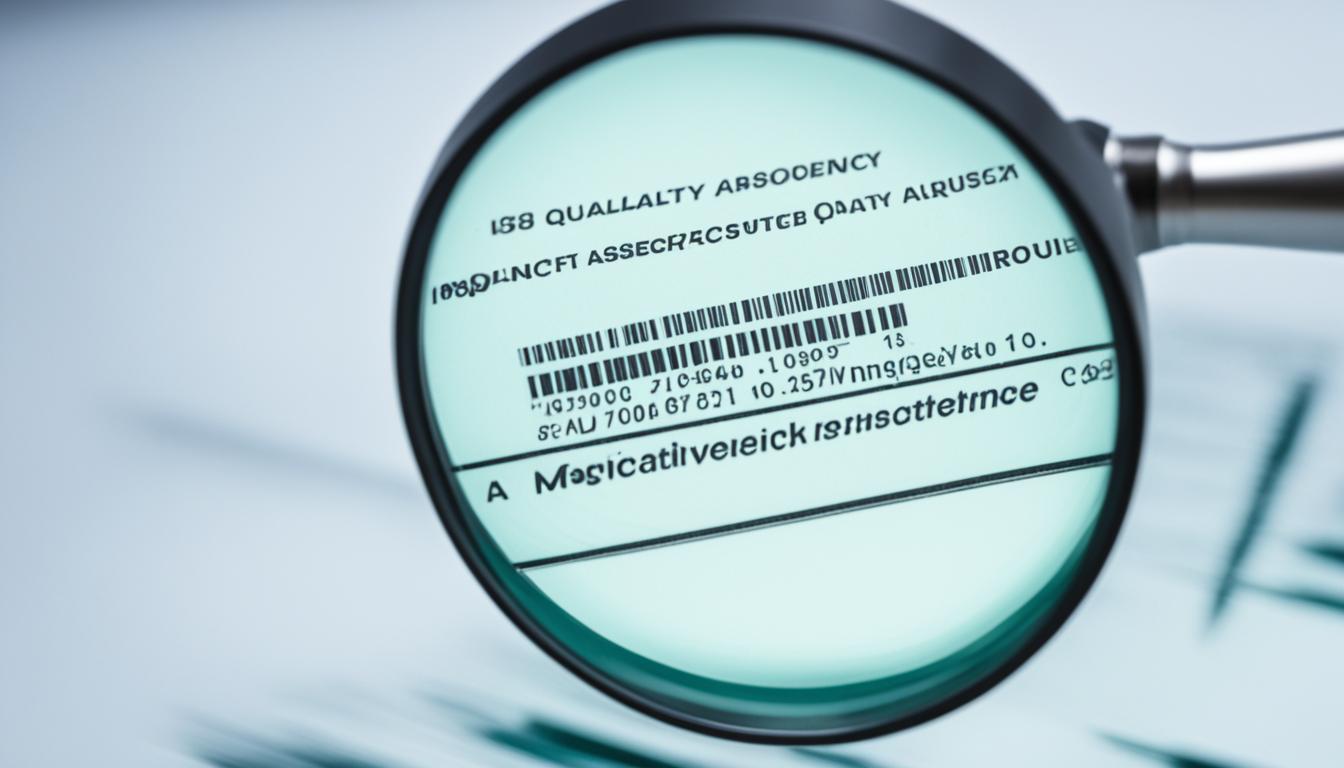Did you know the global quality assurance market is set to hit $16.8 billion by 2026? This shows how crucial quality assurance (QA) is for product and service success. In today’s fast world, ignoring QA is not an option for companies.
QA is key to a company’s success. It protects product and service quality from start to finish. With strong QA steps, companies can always get better, avoid big mistakes, and give their customers the best experiences.
Key Takeaways
- The global quality assurance market is projected to reach $16.8 billion by 2026, highlighting the critical importance of QA processes.
- Quality assurance is the foundation for delivering reliable, high-quality products and services in today’s competitive business landscape.
- Comprehensive QA protocols help organizations foster a culture of continuous improvement and minimize the risk of costly errors.
- Effective QA practices enable organizations to consistently deliver exceptional customer experiences.
- Quality assurance is a holistic approach that encompasses software testing, defect tracking, and a range of other processes.
Embracing Quality Assurance Processes
Quality assurance is key in software development. Software testing is at the core of this process. It helps find and fix problems early, making sure the software is top-notch.
Software Testing: A Cornerstone of Quality
Testing includes unit testing, integration testing, and end-to-end testing. This ensures the software works well. Test automation makes testing faster, and code reviews and regression testing keep new problems away. This way, teams can fix issues before they get worse.
Defect Tracking: Identifying and Resolving Issues
Good defect tracking is vital for quality assurance. It helps teams quickly find, document, and fix problems. Using defect tracking with continuous integration and agile methodologies makes things smoother. This leads to a culture of always getting better.
“Quality is not an act, it is a habit.” – Aristotle
By focusing on quality assurance, companies can make their software more reliable and better for users. This leads to happier customers and more success for the business.
Quality Assurance Processes: A Holistic Approach
Getting great at software development means looking at quality assurance from start to finish. Quality assurance processes should be part of every step, from planning to the end. This makes sure the software works well.
Keeping a strong test coverage is key. It means testing the software well to make sure it does what it should. This way, problems are found early, saving time and money.
Continuous improvement is also vital. Teams need to keep learning and adapting. They should check their processes often, find ways to get better, and make changes to improve the software quality.
A good quality assurance plan focuses on testing and getting better. This helps make software reliable and work well. By thinking this way, companies can keep up with changes and meet their customers’ needs.

Conclusion
Quality assurance is key to making software better. It involves testing, tracking defects, and always improving. This way, companies can make software that works well and meets customer needs. These steps help build a strong quality culture in software development.
Testing and tracking defects help teams find and fix problems early. This saves time and money on later fixes. By always improving their quality checks, companies can keep up with new user needs and tech changes. This leads to software that always meets customer expectations.
The software world is always changing. So, having a full plan for quality checks is vital for staying ahead. By focusing on quality from the start, companies can be known for being reliable and trustworthy. This helps them stay competitive and ensures their software does well over time.
FAQ
What are the key components of a comprehensive quality assurance process?
A strong quality assurance process includes key parts like software testing, tracking defects, code reviews, test automation, and continuous integration. These practices help find and fix problems early. This ensures the software is reliable and of high quality.
How does software testing contribute to quality assurance?
Software testing is vital for quality assurance. It helps find and fix defects before the software is released. This includes unit testing, integration testing, and end-to-end testing. Automation makes testing faster, and regression testing checks for new problems.
What is the role of defect tracking in quality assurance?
Defect tracking is key for quality assurance. It helps teams quickly find, report, and fix issues. Using it with continuous integration and agile methods makes the process smoother. It encourages a culture of ongoing improvement.
How can code reviews and documentation contribute to quality assurance?
Code reviews and good documentation are vital for quality assurance. Code reviews let peers check each other’s work early. This helps spot and fix problems quickly. Good documentation, like test plans and user guides, makes sure everyone understands the software’s needs and how it works.
What is the role of continuous integration in quality assurance?
Continuous integration is key for quality assurance. It means building, testing, and deploying software often and automatically. This helps teams quickly find and fix integration problems. It supports a culture of ongoing improvement and ensures top-quality software.
